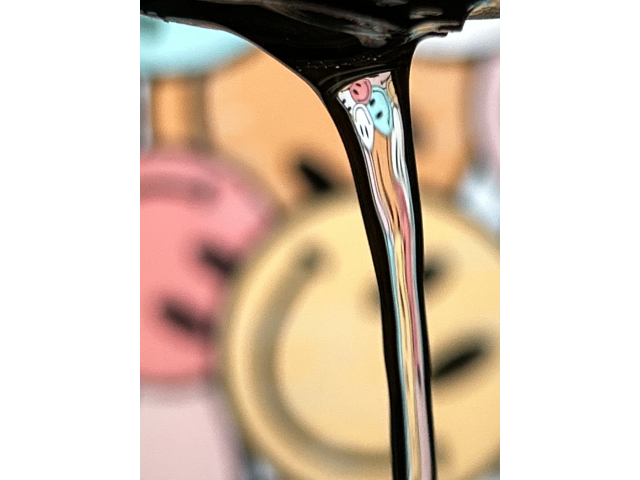Melting Smiley Faces
My photo illustrates the refraction of light. The stream of water acts as a convex lens, giving it the ability to refract light inwards. To set up my photo, I placed my computer screen parallel to the faucet fixture of my kitchen sink. Having the computer screen parallel to the metal fixture allowed for computer light to travel along the principal axis and into my camera. The principle axis allows an imaginary line to connect the centers of two lenses. Thus, being able to directly capture the converging and focusing effect of the water stream on the images of smiley faces displayed on my computer. Refraction, or the bending of light, occurs when light changes speed and direction when passing through different materials forming an image. Since the cross section of the water stream is thicker in the middle and thinner on the sides, it could be seen as a converging lens; causing the light to bend towards a focal point, allowing a real image to be formed. As captured in my photo, the majority of the smiley faces are clear images. Due to the fact that the light rays all converged on the photodetector of my camera, which was carefully placed at a specific spot to capture a clear image. However, looking down the water stream, a bend, or “melting” effect appears on the lower smiley face images; This indicates that many of the “fringe” (less central) light rays were bent at more extreme angles, hence, the melting effect.
Emily Orellana
Description
Essay Title: Melting Smiley Faces
Category: Contrived
Photo Number: 10399
School: Sleepy Hollow High School
Teacher Name: Leila Madani
